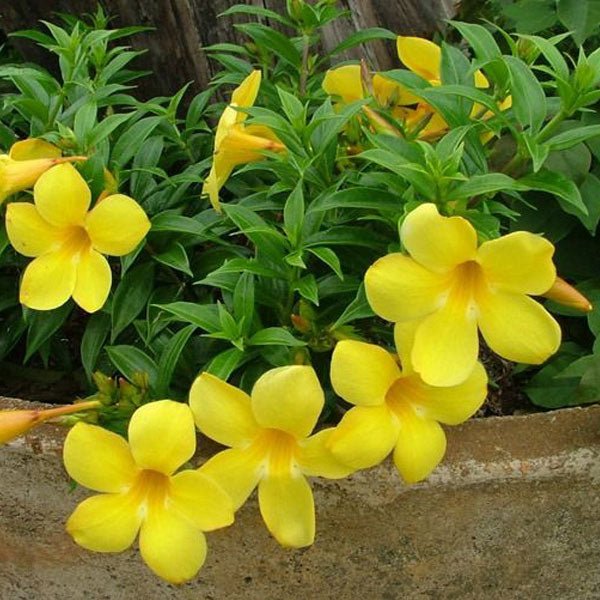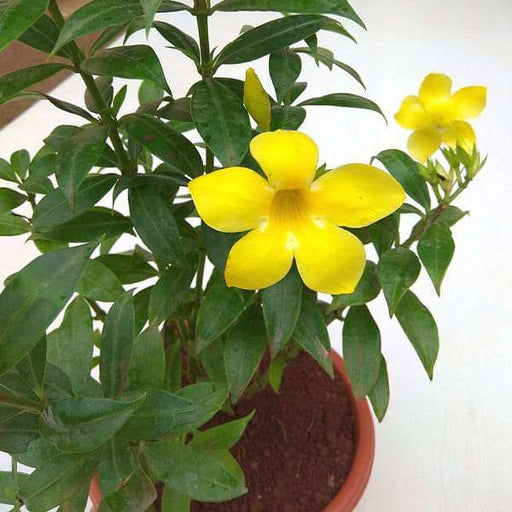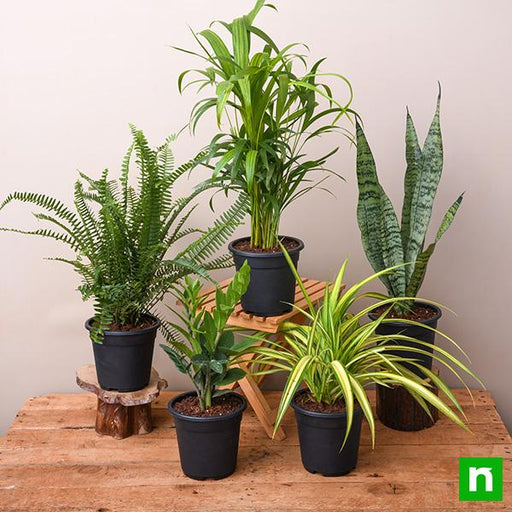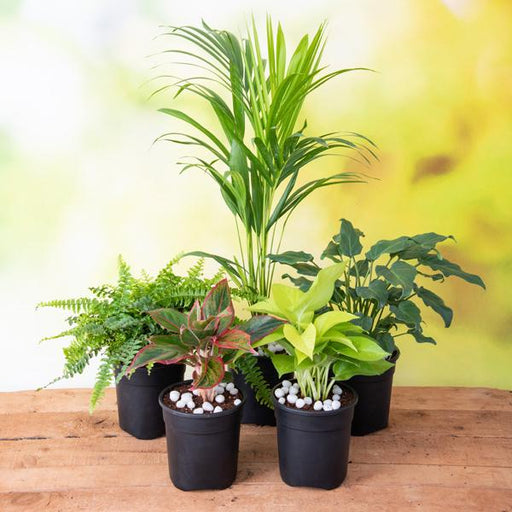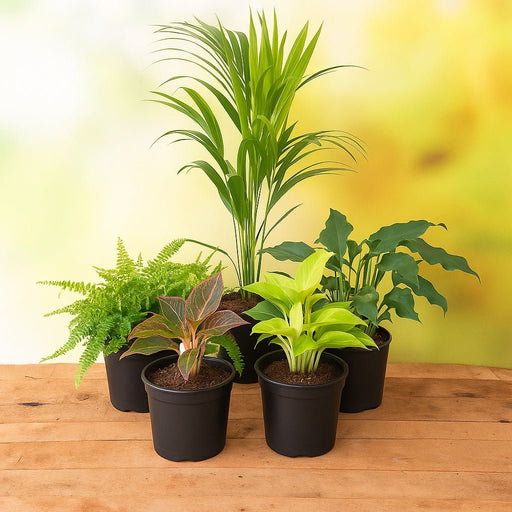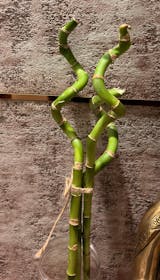Allamanda cathartica
Allamanda cathartica, also known as golden trumpet or yellow bell, is a species of flowering plant in the Apocynaceae family. It is a popular ornamental plant due to its large, showy yellow flowers and lush green foliage. Allamanda cathartica requires well-draining soil and regular watering.
Allamanda schottii
Allamanda schottii is a species of flowering plant in the Apocynaceae family, native to Brazil. It is a climbing plant that can reach up to 10 feet in height and produces bright yellow flowers. Allamanda schottii prefers full sun and well-draining soil.
Allamanda blanchetii
Allamanda blanchetii, also known as purple allamanda or violet allamanda, is a species of flowering plant in the Apocynaceae family. It is a climbing plant that produces deep purple flowers and requires full sun and well-draining soil.
Allamanda neriifolia
Allamanda neriifolia, also known as dwarf allamanda, is a species of flowering plant in the Apocynaceae family. It is a shrub that can grow up to 3 feet in height and produces yellow flowers. Allamanda neriifolia prefers full sun and well-draining soil.
Allamanda hendersonii
Allamanda hendersonii, also known as Henderson's allamanda, is a species of flowering plant in the Apocynaceae family. It is a shrub that can grow up to 6 feet in height and produces large yellow flowers. Allamanda hendersonii requires full sun and well-draining soil.
Allamanda violacea
Allamanda violacea, also known as purple trumpet or violet trumpet, is a species of flowering plant in the Apocynaceae family. It is a climbing plant that produces purple flowers and requires full sun and well-draining soil.
Allamanda grandiflora
Allamanda grandiflora, also known as large-flowered allamanda or bush allamanda, is a species of flowering plant in the Apocynaceae family. It is a shrub that can grow up to 10 feet in height and produces large yellow flowers. Allamanda grandiflora prefers full sun and well-draining soil.
Allamanda schotti
Allamanda schotti is a species of flowering plant in the Apocynaceae family, native to the Amazon rainforest. It is a climbing plant that produces yellow flowers and requires full sun and well-draining soil.
Allamanda cathartica 'Compacta'
Allamanda cathartica 'Compacta' is a compact cultivar of the species Allamanda cathartica. It is a shrub that can grow up to 4 feet in height and produces large yellow flowers. Allamanda cathartica 'Compacta' prefers full sun and well-draining soil.
Allamanda blanchetii 'Cherries Jubilee'
Allamanda blanchetii 'Cherries Jubilee' is a cultivar of the species Allamanda blanchetii. It is a climbing plant that produces deep purple flowers with white centers. Allamanda blanchetii 'Cherries Jubilee' requires full sun and well-draining soil.
Allamanda oenotheraefolia
Allamanda oenotheraefolia, also known as Allamanda schomburgkii, is a species of flowering plant in the Apocynaceae family, native to South America. It is a shrub that can grow up to 6 feet in height and produces large yellow flowers. Allamanda oenotheraefolia prefers full sun and well-draining soil.
Allamanda blanchetii 'Purple Knight'
Allamanda blanchetii 'Purple Knight' is a cultivar of the species Allamanda blanchetii. It is a climbing plant that produces deep purple flowers and requires full sun and well-draining soil.
Allamanda polyantha
Allamanda polyantha, also known as allamanda lutea, is a species of flowering plant in the Apocynaceae family, native to the Caribbean. It is a climbing plant that produces yellow flowers and requires full sun and well-draining soil.
Allamanda stans
Allamanda stans, also known as yellow allamanda or common trumpet, is a species of flowering plant in the Apocynaceae family, native to South and Central America. It is a shrub that can grow up to 10 feet in height and produces yellow flowers. Allamanda stans prefers full sun and well-draining soil.
Allamanda blanchetii 'Violacea'
Allamanda blanchetii 'Violacea' is a cultivar of the species Allamanda blanchetii. It is a climbing plant that produces deep purple flowers and requires full sun and well-draining soil.
Allamanda cathartica 'Compacta Yellow'
Allamanda cathartica 'Compacta Yellow' is a compact cultivar of the species Allamanda cathartica. It is a shrub that can grow up to 4 feet in height and produces large yellow flowers. Allamanda cathartica 'Compacta Yellow' prefers full sun and well-draining soil.
Allamanda angustifolia
Allamanda angustifolia, also known as narrow-leaved allamanda, is a species of flowering plant in the Apocynaceae family, native to South America. It is a climbing plant that produces yellow flowers and requires full sun and well-draining soil.
Allamanda blanchetii 'Singapore'
Allamanda blanchetii 'Singapore' is a cultivar of the species Allamanda blanchetii. It is a climbing plant that produces deep purple flowers and requires full sun and well-draining soil.
Allamanda violacea 'Dark Purple'
Allamanda violacea 'Dark Purple' is a cultivar of the species Allamanda violacea. It is a climbing plant that produces deep purple flowers and requires full sun and well-draining soil.
Allamanda blanchetii 'White Dwarf'
Allamanda blanchetii 'White Dwarf' is a cultivar of the species Allamanda blanchetii. It is a climbing plant that produces white flowers with purple centers and requires full sun and well-draining soil.

